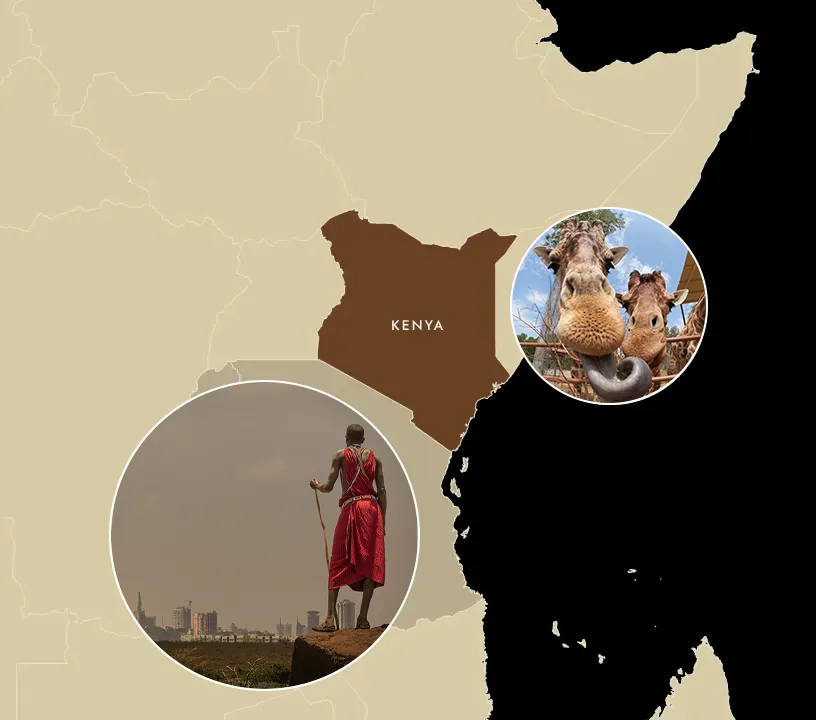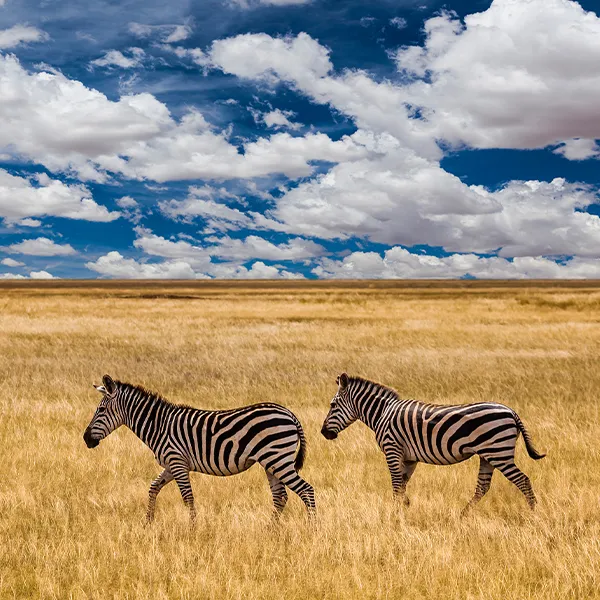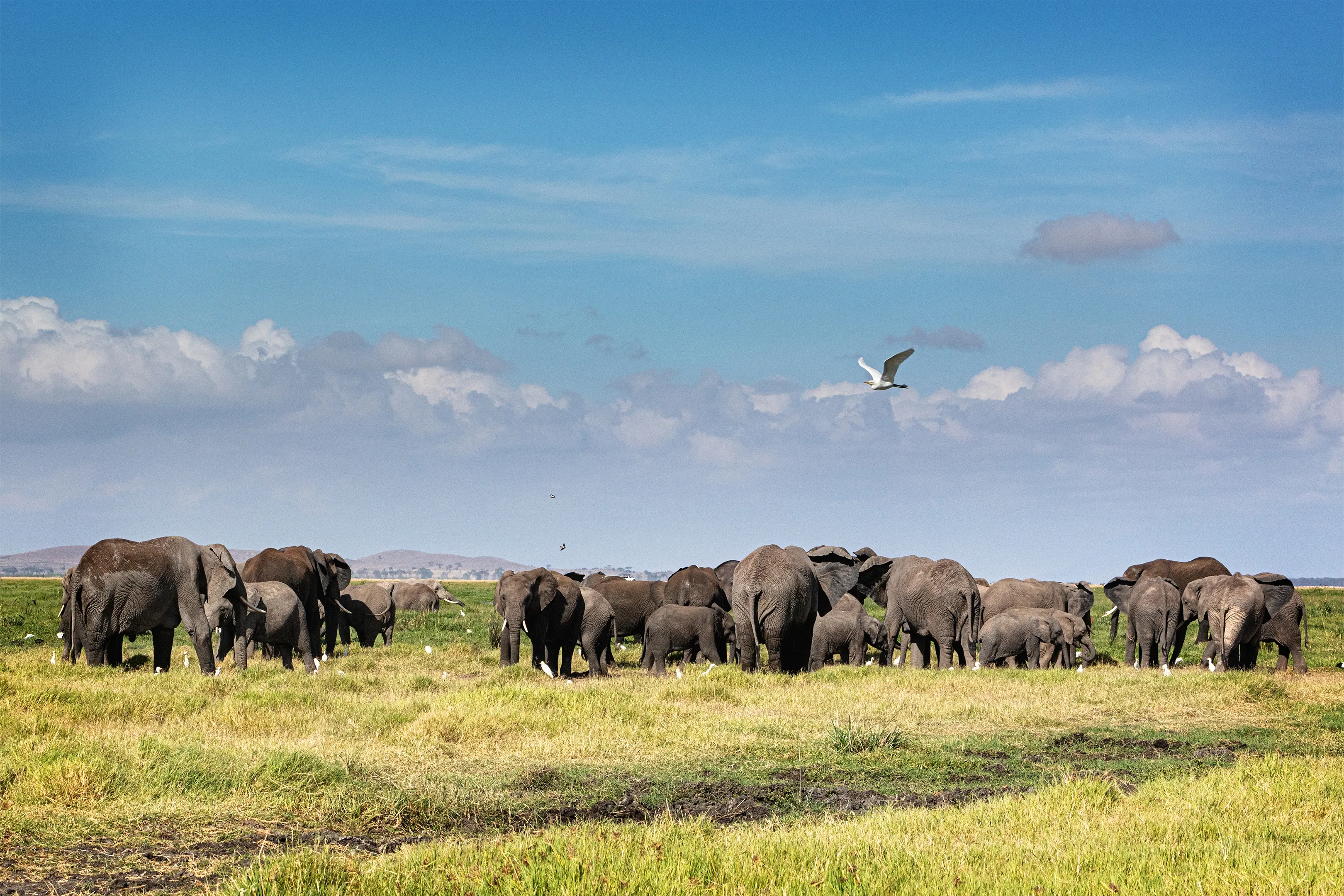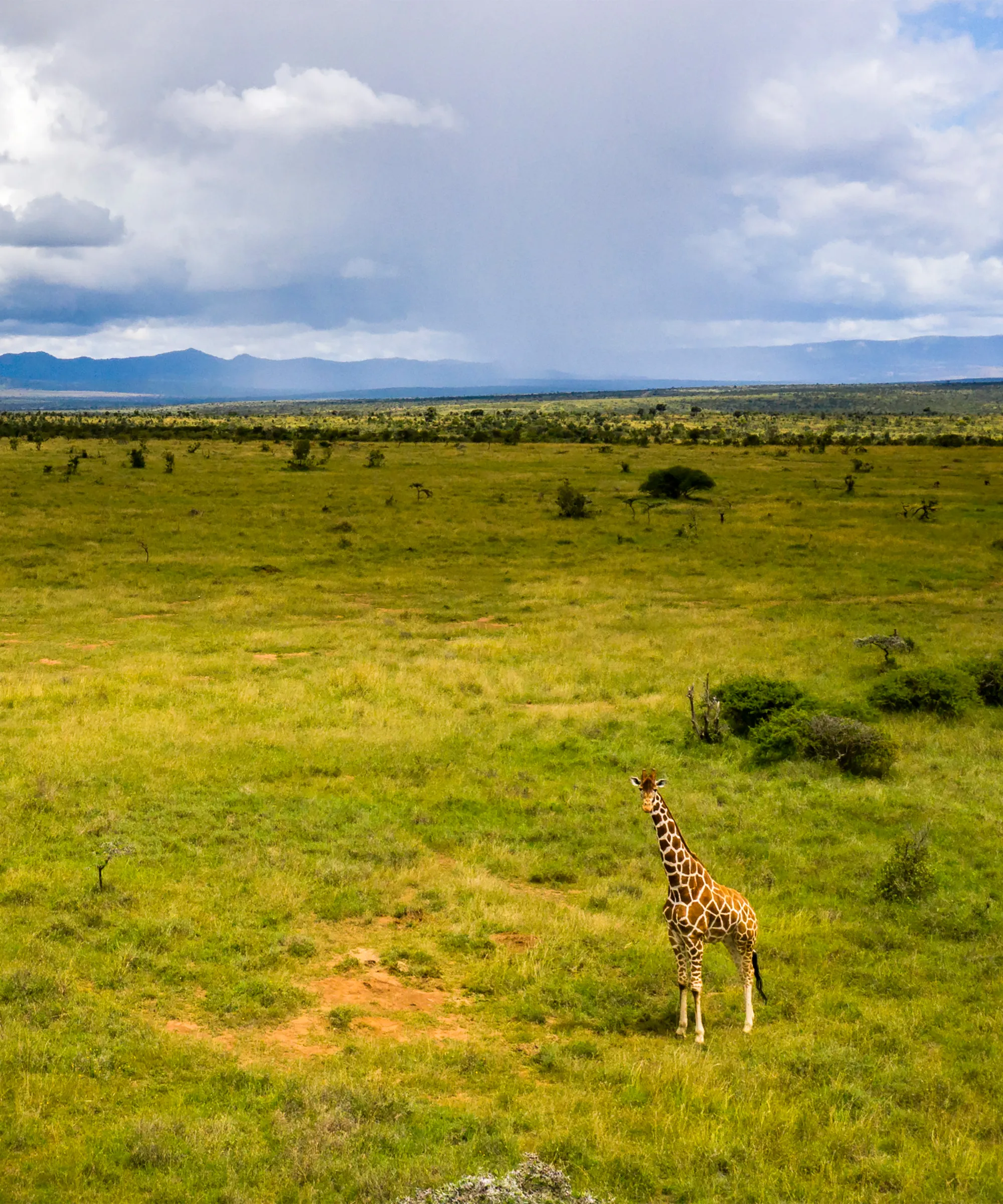.webp)





Tsavo East National Park is Kenya’s largest park, spanning over 13,700 square kilometers of vast, untamed wilderness. It’s best known for its iconic red elephants, dusted with the park’s fine volcanic soil, and its endless open plains beneath an enormous sky.
Unlike busier parks, Tsavo East offers absolute solitude. On many game drives, you’ll feel like you have the entire wilderness to yourself. Most safaris explore the southern section near the Galana River and Voi, where wildlife viewing is excellent and camps are few and far between.
This is a land of space, silence, and spectacle.

From the dramatic landscapes of the Yatta Plateau to the cascading waters of Lugard Falls, Tsavo East offers an authentic, off-the-beaten-path safari experience. It's a perfect destination for travellers seeking big skies, wild game, and a raw, untouched African experience.

Tsavo East National Park, Kenya
2.7848° S, 38.8174° E

The dry months from June to October and January to February offer ideal conditions for wildlife viewing and photography.
Rainy seasons, especially in April and November, bring thick vegetation and widespread water, making it more difficult to spot animals.
Tsavo East is reachable by road from Nairobi or Mombasa, with key entry points at Voi, Buchuma, and Sala Gates.
Visitors can also take the Nairobi–Mombasa train to Voi and arrange local transport to the park and lodges.
Tsavo East remains hot and dry year-round, with temperatures peaking during the Wet season between November and May.
The Dry season from June to October brings clearer skies and slightly cooler days, offering some relief from the usual heat.
Guided game drives offer excellent wildlife viewing, particularly of red elephants, buffalo, and lions, across vast open plains.
Birdwatching is also rewarding, with hundreds of species. Self-drives are possible, and charter flights are available for those on organized tours.














Understand the factors that influence safari prices, including park fees, accommodation, and travel seasons in Kenya.
Learn More
Discover the entry requirements, visa types, and straightforward application process for your Kenya tourist visa.
Learn More
Discover Kenya’s diverse local cuisine, featuring dishes such as nyama choma, ugali, samosas, and fresh tropical fruits.
Learn More
Get a practical list of what to pack for comfort, safety, and style on Kenyan safaris.
Learn More
From wildlife safaris to coastal escapes, discover Kenya’s top activities and experiences for every traveller.
Learn MoreThe best time to visit Kenya is during the dry season, which runs from June to September. During these months, the grass is low, water sources are limited, and animals gather in open areas—making them easier to spot on game drives.
Temperatures are mild, skies are clear, and there’s excellent visibility for wildlife photography. It’s also the prime season to witness the Great Wildebeest Migration in the Masai Mara, especially from July to early October, when herds cross from Tanzania’s Serengeti into Kenya.
A well-thought-out Kenya safari packing list ensures comfort, protection, and convenience. Pack neutral-colored clothing, such as khaki or beige, to blend in with the environment and minimize the risk of attracting insects. Include long-sleeved shirts, lightweight trousers, a wide-brimmed hat, and a fleece for chilly mornings.
Don’t forget sunscreen, insect repellent, sunglasses, and binoculars. Most safari flights have baggage restrictions, so soft-sided bags are preferred. If you're visiting during the rainy season (March to May or October to November), include a light raincoat or poncho.
The cost of a Kenya safari depends on several factors, including the season, accommodation type, park entrance fees, and level of luxury. On average, travelers spend between $250 and $ 1,000 per person per day on a private safari package.
Budget safaris with basic lodges are less expensive, while high-end lodges and fly-in safaris tend to increase the price. Costs typically include transport, park fees, meals, game drives, and guide services. Extras, such as balloon rides or cultural visits, may be charged separately.
There are numerous activities to enjoy in Kenya beyond traditional game drives. Wildlife safaris in the Masai Mara, Amboseli, and Lake Nakuru are a must, offering the chance to see the Big Five and other unique animals.
Other activities include hot air balloon rides, guided nature walks, birdwatching, and visits to the David Sheldrick Elephant Orphanage or Giraffe Centre in Nairobi. For a change of scenery, relax on Kenya’s beautiful beaches in Mombasa or Diani.
Kenya is home to several world-renowned national parks and reserves. The most popular Kenya safari parks include the Masai Mara Game Reserve, famous for the Great Migration, and Amboseli National Park, known for its elephant herds and views of Mount Kilimanjaro.
Other top destinations include Tsavo East and West, Lake Nakuru National Park, renowned for its flamingos and rhinos, and the Samburu National Reserve, which is home to rare species. Each park offers a unique ecosystem and wildlife experience, making Kenya a diverse safari destination.
To truly enjoy a safari, plan for at least 3 to 4 nights at each lodge or park. A full day allows for two game drives—one in the morning and another in the late afternoon—when animals are most active.
A comprehensive Kenya safari itinerary typically spans 7 to 10 days, encompassing two or three national parks. This gives you time to enjoy different landscapes, wildlife, and lodge experiences without feeling rushed. It also increases your chances of seeing all the animals on your wishlist.
Yes, Kenya is safe for safari travel, especially when you go with a reputable tour operator. Most lodges and camps are situated in remote areas, far from urban concerns, and they maintain strict safety protocols for their guests.
You’ll be accompanied by professional guides and supported by local staff throughout your trip. For health safety, it’s recommended to take malaria prophylaxis and get a yellow fever vaccination. Staying informed and traveling with a trusted provider ensures a worry-free experience.
“It starts with your ideas. We turn them into an authentic safari filled with wonder, freedom, and wild beauty.”
